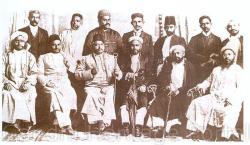
Published date
2 June 1946
The "Ghetto Act" was designed to curtail Indian property ownership in White areas in Natal. Natal was divided into controlled and uncontrolled areas. The controlled areas would be White areas in which Indians were no longer allowed to purchase land. The uncontrolled areas were open to Whites and Indians. In controlled areas, Indians could continue to own land purchased before 21 January 1944 (the date when the Bill was announced), but could no longer purchase new properties. They had to lease land from Whites on condition it was used for trading purposes. The "Ghetto Act" included some 'political representation' to Indians, possibly to soften the blow of the restrictions. This translated into three White representatives in the Assembly and two in the Senate, along with two provincial councillors who could be Indian. The Natal Indian Congress rejected the Act and took its case to both the Indian government and the United Nations. When the South African government ignored both the international community as well as its own citizens, the Natal Indian Congress embarked on a campaign of passive resistance. This campaign saw African, Indian and Coloured people united in South Africa. A 'Joint Declaration of Cooperation' was signed in 1947 between the African National Congress, the Transvaal Indian Congress and the Natal Indian Congress, to work together for an end to the denial of rights by the Apartheid state.
References
Maasdorp, G. and Pillay N. (1977). Urban Relocation and Racial Segregation: The Case of Indian South Africans, Durban: University of Natal Press.|Davenport, T.R.H. (1991). South Africa: A Modern History (4th ed), London: Macmillan Press.|Muller, C.F.J. (ed)(1981). Five Hundred years: a history of South Africa; 3rd rev. ed., Pretoria: Academica, p. 459.